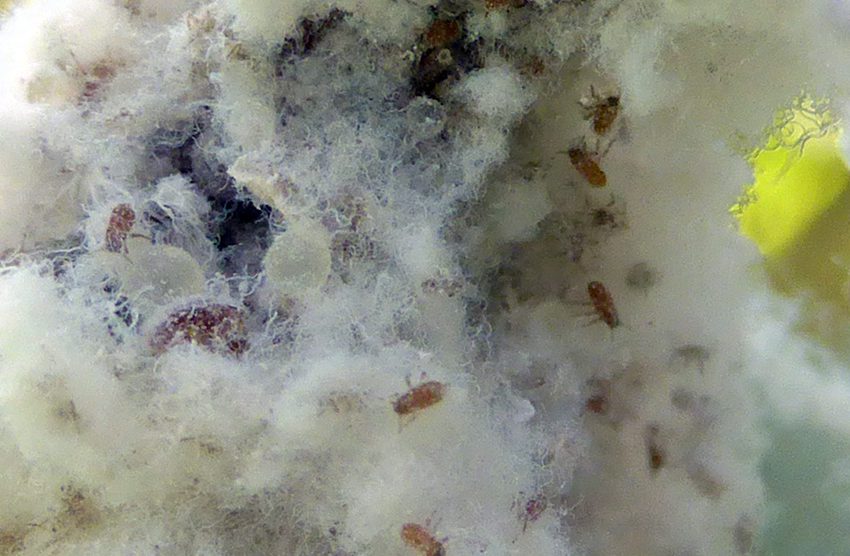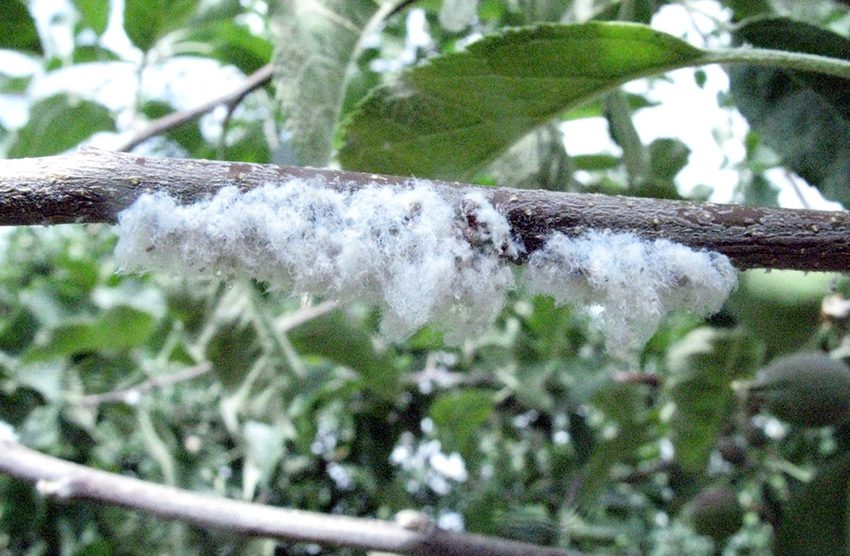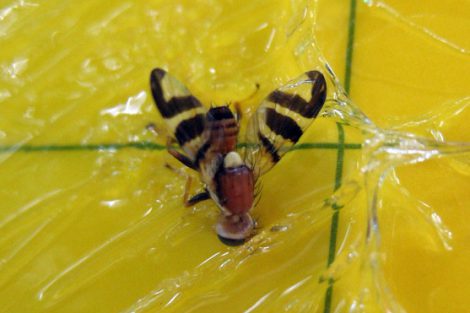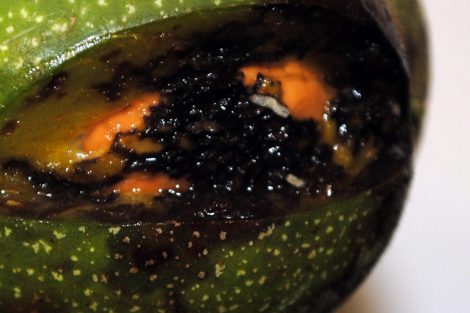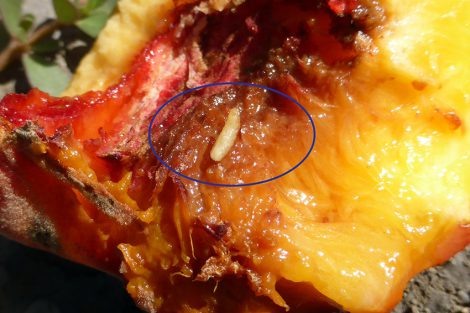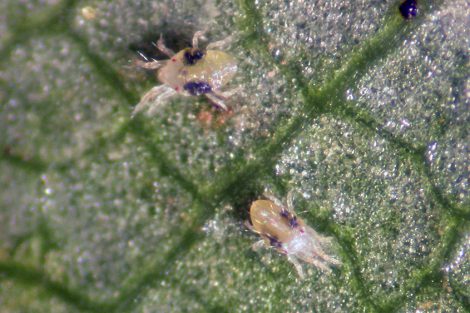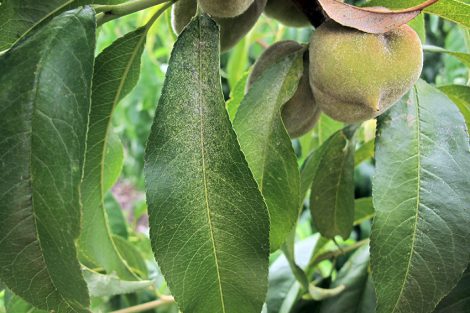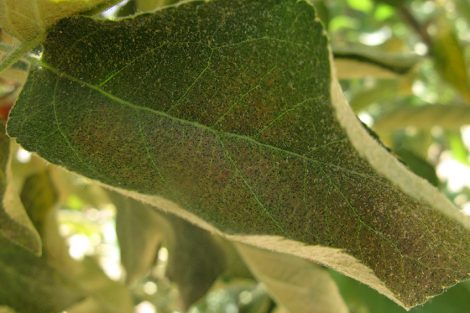In this Issue
- Codling moth and Peach twig borer: updated dates
- Walnut husk fly: time to start sprays
- Greater peachtree borer: continue to protect trunks
- Spider mites: watch foliage for feeding injury
- Books for Sale: Intermountain Tree Fruit Guide and Beneficial Insects of Utah
APPLE, PEAR
Codling Moth
View a pdf of the spray timing table. Be sure to read the instructions at the top of the page, for how to read the table.
Most sites are approaching the start of second generation egg hatch. Because of the hotter conditions, codling moth activity is increasing, and even though there will be a partial third generation, the moth egg-laying and larval activity will essentially be non-stop for the next two months.
Therefore, at the start of second generation, plan to keep the fruit protected up until the “cut-off” date of September 15. By Sept. 15, the shorter day-length signals codling moths to slow or cease their activity.
Woolly Apple Aphid
Woolly apple aphid populations are rapidly increasing in the hot weather we have been having. This species of aphid occurs in the tree as well as below ground. They feed on the bark of the trunk, scaffold limbs, and succulent twigs, as well as on tree roots. Their feeding causes galls that may weaken trees. They are most common in trees that are not regularly sprayed.
If woolly apple aphids have increased to the point of covering more than 10-20% of the tree, they should be treated. Because of their waxy coating, it is important to spray trees to drip to allow the insecticide to be effective.
Treatment
- Residential growers can use insecticidal soap plus 1% oil, aimed directly at the colonies. Ortho Flower, Fruit and Vegetable (acetamiprid) plus 0.5% oil is also effective.
- Options for commercial growers: click here.
White Apple Leafhopper

Second generation nymphs will start in mid to late July. Watch for them on the undersides of leaves. Treatment is warranted at that stage when the pest has been a nuisance at apple-picking time in the past.
PEACH/NECTARINE, APRICOT, PLUM, CHERRY
Peach Twig Borer
View a pdf of the spray timing table. Be sure to read the instructions at the top of the page, for how to read the table.
Second generation egg hatch will begin in a few days to a few weeks at most locations. In high-population areas, two sprays may be required. The first spray should be applied at the earlier date in the date range provided, with the second application 7-21 days later, depending on the material used.
In low population areas, only one application is needed. Apply the spray at the later date shown in the date range.
Be sure to attention to apricots, which ripen earlier. At this time of year, peach twig borer larvae will be entering fruit as they ripen.
Walnut Husk Fly
Walnut husk fly is typically a pest of walnuts, but in Utah, it has been found to attack soft apricots or peaches growing near walnuts. Now is the time in many areas to target adults and prevent egg-laying.
- Most areas of Wasatch Front: July 7 – 10
- Cooler areas (Benches, Cache, Carbon, etc.): July 12 – 23
Along the Wasatch Front, the peak fly emergence will occur in late July, so another application will be needed at that time.
In walnuts, populations of walnut husk fly can be reduced by removing all nuts that fall to the ground.
To make husk removal of infested nuts easier, store them in a damp burlap bag for 2 to 3 days.
Treatment
Options for residential growers:
- Peach, Apricot: Sprays for peach twig borer will also target walnut husk fly. Otherwise, a product containing spinosad (many brands) is an excellent option for both conventional and organic production.
- Walnuts: Spinosad can also be used on walnuts, and should be repeated every 10 days, ending up until one month before harvest.
Options for commercial producers:
- Peach, Apricot: from the USU commercial spray guide
- Walnut: from the Pacific Northwest handbook
Greater Peachtree Borer
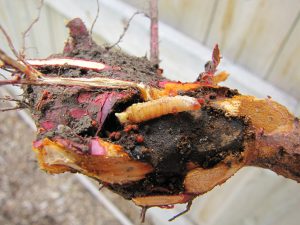
Continue to protect the lower trunks of peach/nectarine, apricot, and plum. through September. Make sure the spray covers the entire surface area, particularly close to ground level, and any exposed roots.
Young trees can be killed when trunks are girdled by feeding; older trees are weakened and become susceptible to attack by pathogens and bark beetles.
Treatment
Materials for residential growers include:
- Hi Yield permethrin products; apply once/month
- Spectracide Triazicide; apply every 3 weeks
- GardenTech Sevin (containing cyfluthrin); apply every 3 weeks
- organic options are products containing spinosad or pyrethrins, or BioNeem (azadirachtin); apply every 7 to 10 days
Materials for commercial growers: click here
Other ways to prevent attack are:
- Remove all weeds, grass, and excess soil from around the base of the tree. Heat and dryness reduce the survival of eggs and larvae.
- Avoid mechanical and rodent-caused injuries to trunks.
- Keep trees healthy with optimal nutrition and irrigation
ALL FRUITS
Spider Mites
Spider mite activity is slowly increasing on apples, peaches, and cherries. Check for mites by examining the leaves on the lowest branches first. (Mites overwinter in groundcover and migrate up the tree in hot, dry weather.)
Look for leaves that are stippled, and turn them over. Using a hand lens, look for the slow-moving mites. Before making a decision on whether to treat, also look for predatory mites within the pest mite population. These are faster moving mites, about the same size, that can prevent spider mite densities from exceeding economic thresholds. If predators are present, then a treatment may not be necessary.
Treatment
- Residential growers: A 0.5-1% application of horticultural oil is very effective on mites, especially when populations are low, and when the spray coverage is good enough to cover the undersides of the leaves.
- Spider mite options for commercial growers. (Select crop, and then select “fruit present” stage.)
OTHER INFO
Books for Sale
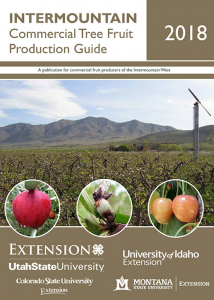 Intermountain Tree Fruit Production Guide: Commercial fruit producers growing apple, pear, peach/nectarine, cherry, apricot, and plum will find the Intermountain Tree Fruit Production Guide invaluable. Fourteen chapters cover IPM methods, special pest management programs such as mating disruption, insect and disease descriptions with color images, organic management, thinning, irrigation, nutrition, and comprehensive spray recommendations based on crop stage and pest.
Intermountain Tree Fruit Production Guide: Commercial fruit producers growing apple, pear, peach/nectarine, cherry, apricot, and plum will find the Intermountain Tree Fruit Production Guide invaluable. Fourteen chapters cover IPM methods, special pest management programs such as mating disruption, insect and disease descriptions with color images, organic management, thinning, irrigation, nutrition, and comprehensive spray recommendations based on crop stage and pest.
197 pages; spiral-bound, with UV protected cover; $12
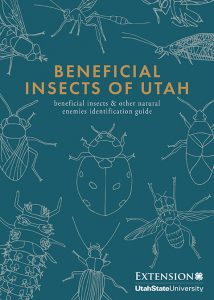 Beneficial Insects of Utah: Beneficial organisms are key to a healthy garden or farm. This book, written by USU Extension IPM team members, Cami Cannon and Marion Murray, includes hundreds of full-color images of over 60 beneficial predators, parasites, and pathogens that attack plant pests. Each entry is written in short, concise language, and includes a description, where and when it can be found, and how to conserve it.
Beneficial Insects of Utah: Beneficial organisms are key to a healthy garden or farm. This book, written by USU Extension IPM team members, Cami Cannon and Marion Murray, includes hundreds of full-color images of over 60 beneficial predators, parasites, and pathogens that attack plant pests. Each entry is written in short, concise language, and includes a description, where and when it can be found, and how to conserve it.
98 pages; spiral-bound; $6

